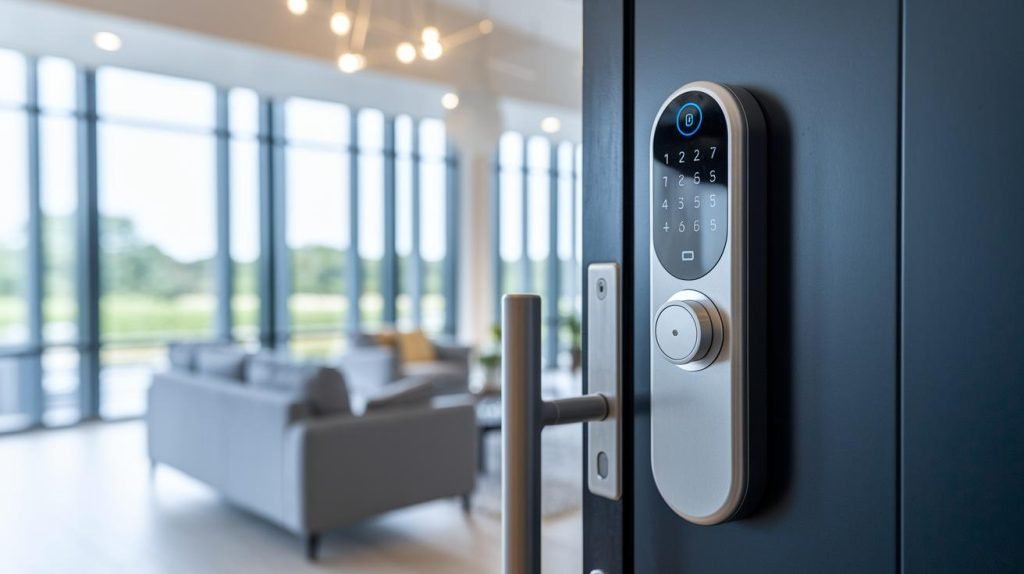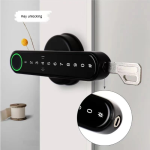Ever wish your front door could spot who’s coming in like a silent guard? It sounds like science fiction, but smart door locks really do it – no key needed! Some studies say homes with these locks see about 30 percent fewer break-ins.
Inside the lock, a tiny chip scans your PIN code, a fingerprint, or a tap from your smartphone. Then a small motor slides the deadbolt home with a smooth click. You can almost feel it lock in place.
All this happens over wireless signals like Bluetooth (short-range wireless tech) or Wi-Fi (your home wireless network). Every message is wrapped in secret codes so no one can eavesdrop. Got it?
Oops, let me clarify that process. We’ll peel back the parts: the hardware bits, how they talk to each other, and the security checks. Next up, you’ll see exactly how these electronic sentries work.
Smart Door Lock Functionality Overview
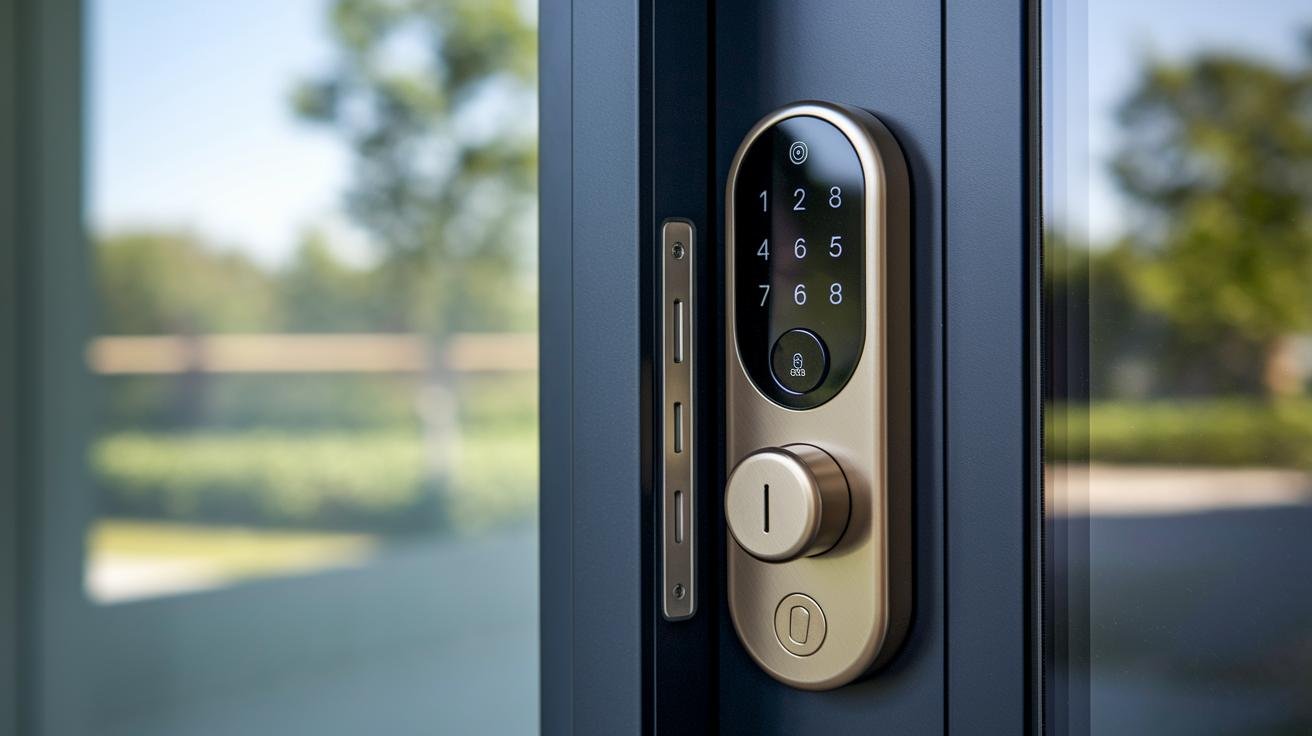
Ever wondered how a smart door lock really works? You might punch in a PIN on a keypad, scan a fingerprint, or just tap your smartphone app. Inside, a tiny chip (processor) checks your info, flips an electronic switch, then a motor clicks the deadbolt into place. You even get an instant beep or a little green light telling you the bolt has locked.
Most locks chat over Bluetooth (short-range wireless) or Wi-Fi (home wireless network), sending your unlock command in a flash. Every message rides on its own secret code, you know, it’s called encryption. And the best part? The lock’s built-in brain keeps things running fast, even if your Wi-Fi is acting up. So next, we’ll peek at the inner circuits, chat about communication protocols, and explore the security steps that keep your home safe.
Core Hardware Components of Smart Door Locks

Smart door locks pack a team of parts behind your door. They work together to keep your home safe and make you feel good. Ever fumbled with your keys in the dark? These locks save you that hassle.
- Physical lock mechanism. A solid deadbolt and strike plate make the first barrier. You can almost hear the click when it slides in.
- Motor and clutch. A stepper motor (tiny robot engine) turns the bolt smoothly. The clutch (slip-gear) slips if someone tries to force it.
- Position sensors. A hall sensor (magnetic position detector) tells the lock if the bolt is all the way in, or out. No guesswork.
- Control electronics. A microcontroller (mini computer) lives on a little circuit board. It checks your code, fingerprint or smartphone tap and sends the go signal.
- Power system. It runs on AA batteries and has a power-saving circuit. You’ll get a low-battery beep or light before it dies.
- Manual override. Oops, phone dead? A mechanical key slot lets you still open the door.
All these parts chat behind your door, um, like pairing your phone to a Bluetooth speaker, they just click. The microcontroller listens for keypad taps, fingerprint scans or app commands.
It then tells the motor to move the deadbolt and watches the hall sensor to confirm. The clutch protects the gears if someone jams the lock. Meanwhile, the battery circuit keeps an eye on juice levels, flashing a warning so you can swap in fresh AA cells and keep your home locked tight.
How do smart door locks work: Effortless Security
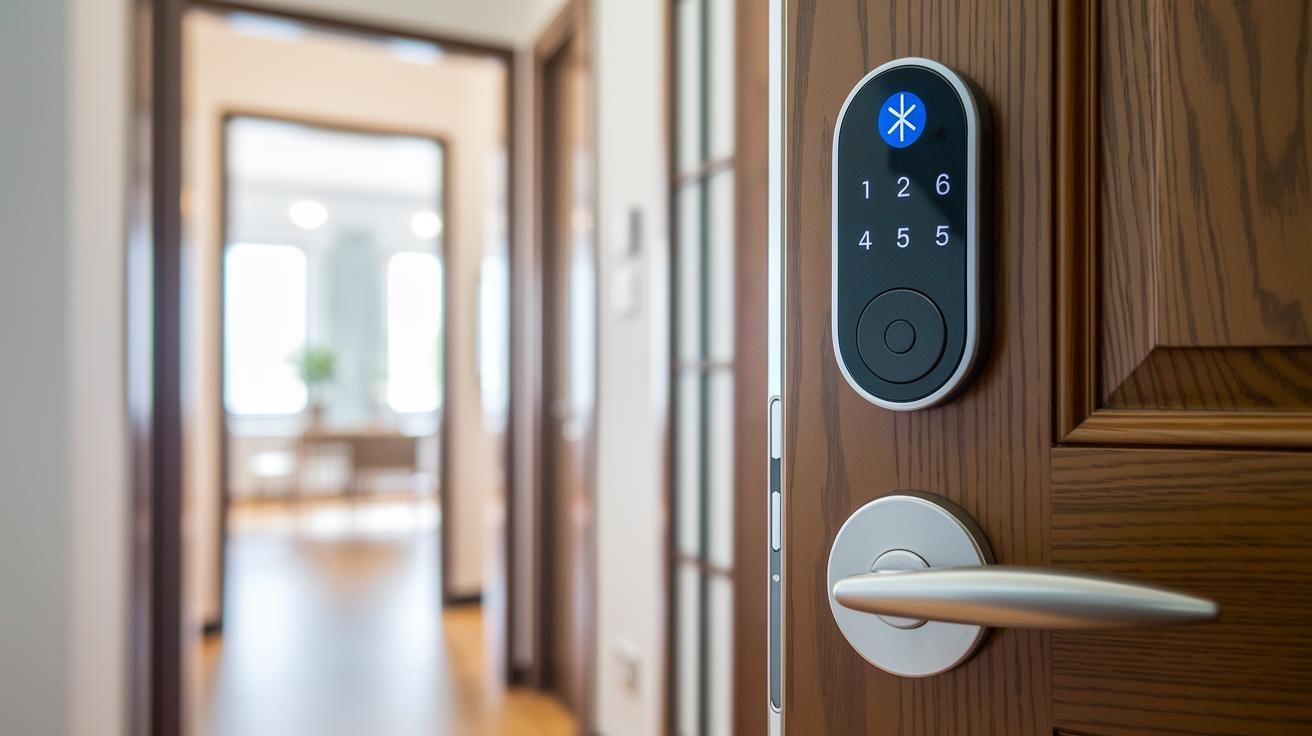
Ever fumbled with your keys in the dark?
Bluetooth door locks use Bluetooth Low Energy (BLE) to link your phone or tablet to the lock’s microcontroller (the lock’s little computer chip). It’s just like pairing your phone to a speaker.
You follow the same steps you’d use for bluetooth mortise door lock setup. Then you tap your phone to lock or unlock, even if your Wi-Fi is down. The lock holds a list of trusted devices in its firmware (its built-in software), so random signals won’t work.
Wi-Fi smart locks add cloud power to your front door. Once you connect the lock to your home router it can send a notification when someone enters. You can lock or unlock from anywhere. No need to get off the couch!
Z-Wave (wireless home network tech) and Zigbee (another smart-home link) door locks plug into hubs like SmartThings or Hubitat. You can set up scenes, like turning on the porch light when the bolt clicks or pausing the alarm the moment you walk in. Um, the hub lets you manage lots of locks under one secure network.
All these options: Bluetooth, Wi-Fi, Z-Wave or Zigbee wrap the lock’s radio chat in end-to-end encryption (this keeps your data private). That means local control and cloud management both stay protected. It’s the best way to get keyless ease with real peace of mind.
Authentication Methods in Smart Door Locks
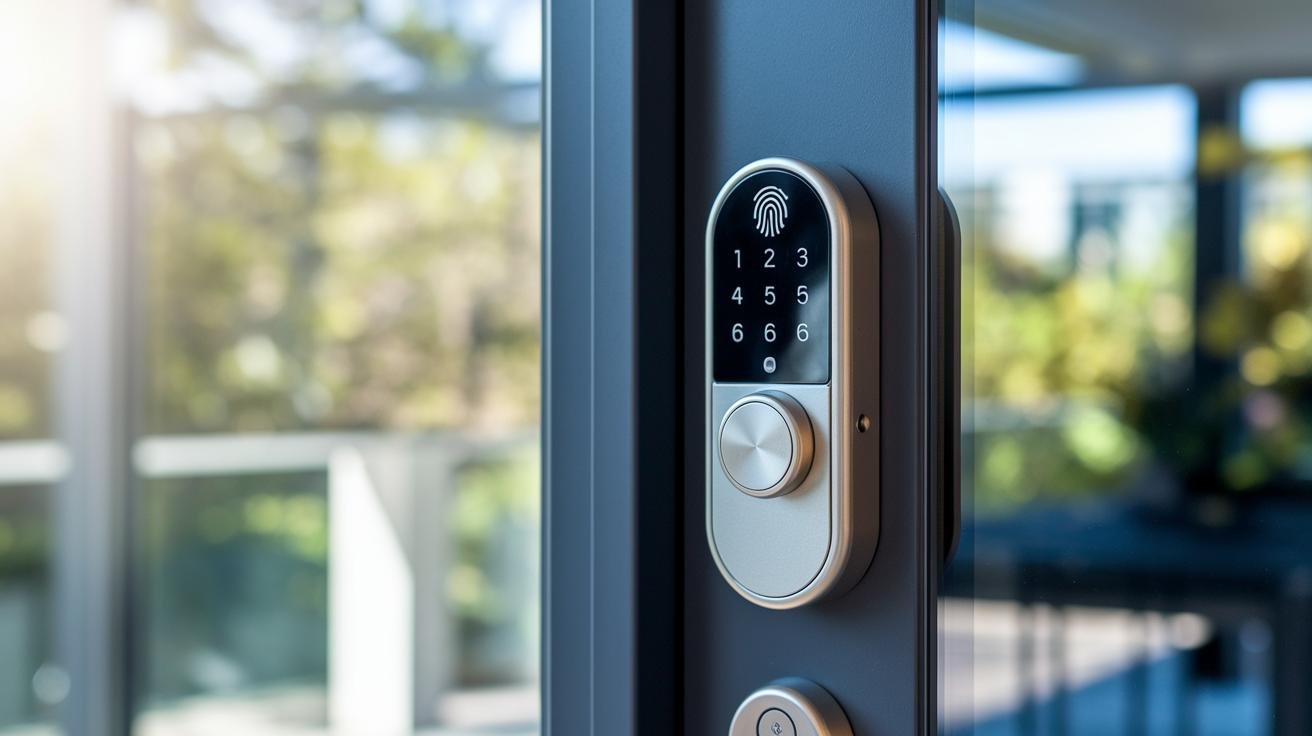
When you think smart locks, you might picture PIN pads, fingerprints, or phone apps. But there’s more. You can also tap RFID (radio frequency ID) cards or NFC (near-field communication) tags. And yep, you can even use your voice.
-
RFID and NFC tag tapping
Ever fumbled with keys in the dark? Just tap your card or tag on the reader. RFID and NFC use a shared secret code with the lock. It only clicks open when the code matches. You’ll hear a soft beep. It’s proof every signal is locked down to block sneaky replay attacks. -
Voiceprint and voice-assistant access
Some locks learn your unique voice pattern (think of it as a verbal fingerprint). They check pitch and tone before unlatching. Others team up with Alexa or Google. You say “open the door,” and click, it swings in. And don’t worry, your voice data stays encrypted end-to-end so no one can reuse a recording.
Every method runs through secure, encrypted exchanges. Replay tricks and brute-force hacks stand no chance.
Security Protocols and Encryption in Smart Door Locks
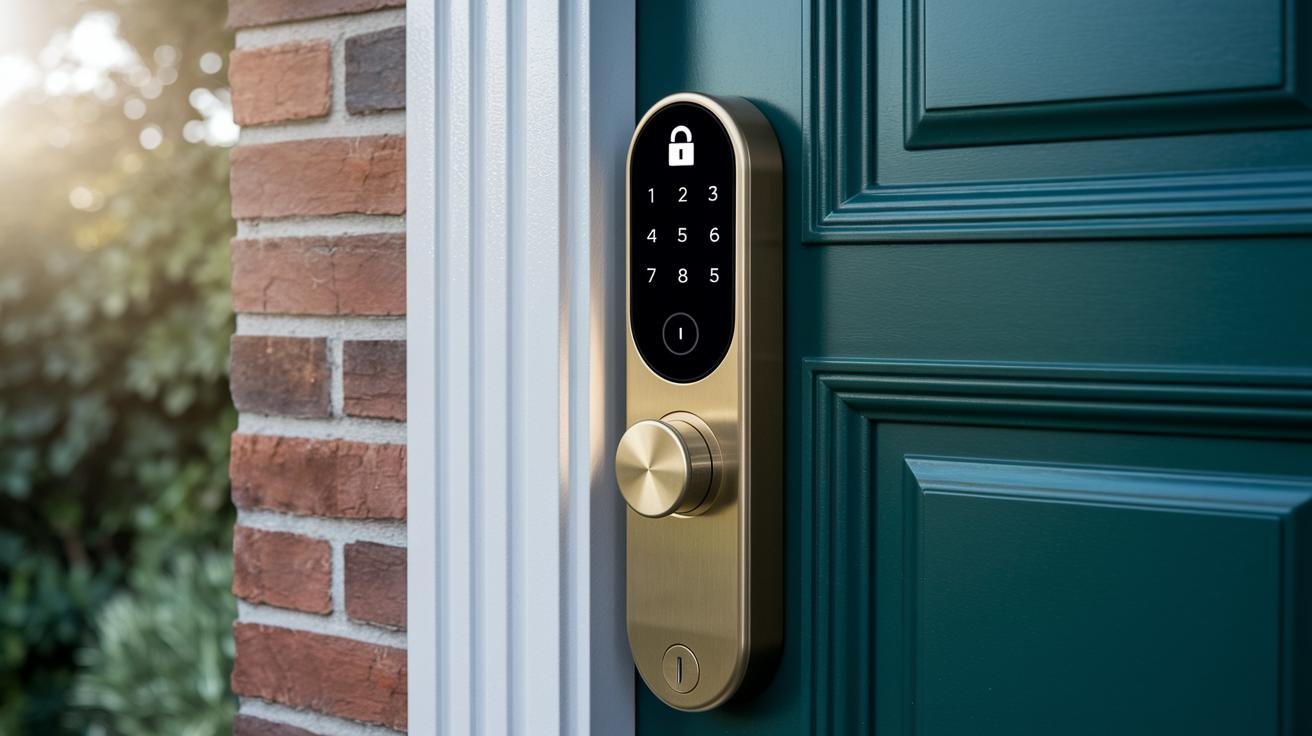
Most smart door locks use AES-128 encryption (that’s like a sturdy safe) to keep your codes private. Then they wrap each packet in TLS/SSL (think armored truck) when sending commands over Bluetooth (wireless phone link), Wi-Fi, or Z-Wave (wireless home network tech). Ever wondered how your info stays locked down? This double layer makes it really tough for anyone to sneak a peek.
Hmm, secure bootloader access stops any unauthorized firmware from loading. Over-the-air updates patch bugs and close loopholes without extra tools. You just tap the update ping in your lock’s app. Next thing you know, your lock’s running the latest fixes – no toolbox needed.
Two-factor authentication adds another fence around your door. You might punch in a PIN or scan your fingerprint after you okay a notification in the companion app. It’s a backup check in case someone guesses or copies your main code. That extra step really cuts down on break-in tries.
Certifications like UL 294 and ANSI Grade 1 or 2 prove your lock passed hard tamper and impact tests. IP ratings tell you if it can shrug off sun, rain, or dust. FCC and CE compliance means it won’t jam your other wireless gear or break local rules. It’s peace of mind you can see on the spec sheet.
Keep up network security basics. Pick a strong, unique router password. Hide or rename your Wi-Fi network name (SSID). Flip on a VPN (it masks your traffic).
These moves seal off wireless channels and stop snoops from probing your lock’s signals. Got a router that supports it? Set up a guest network just for your smart gadgets.
Installation and Setup of Smart Door Locks
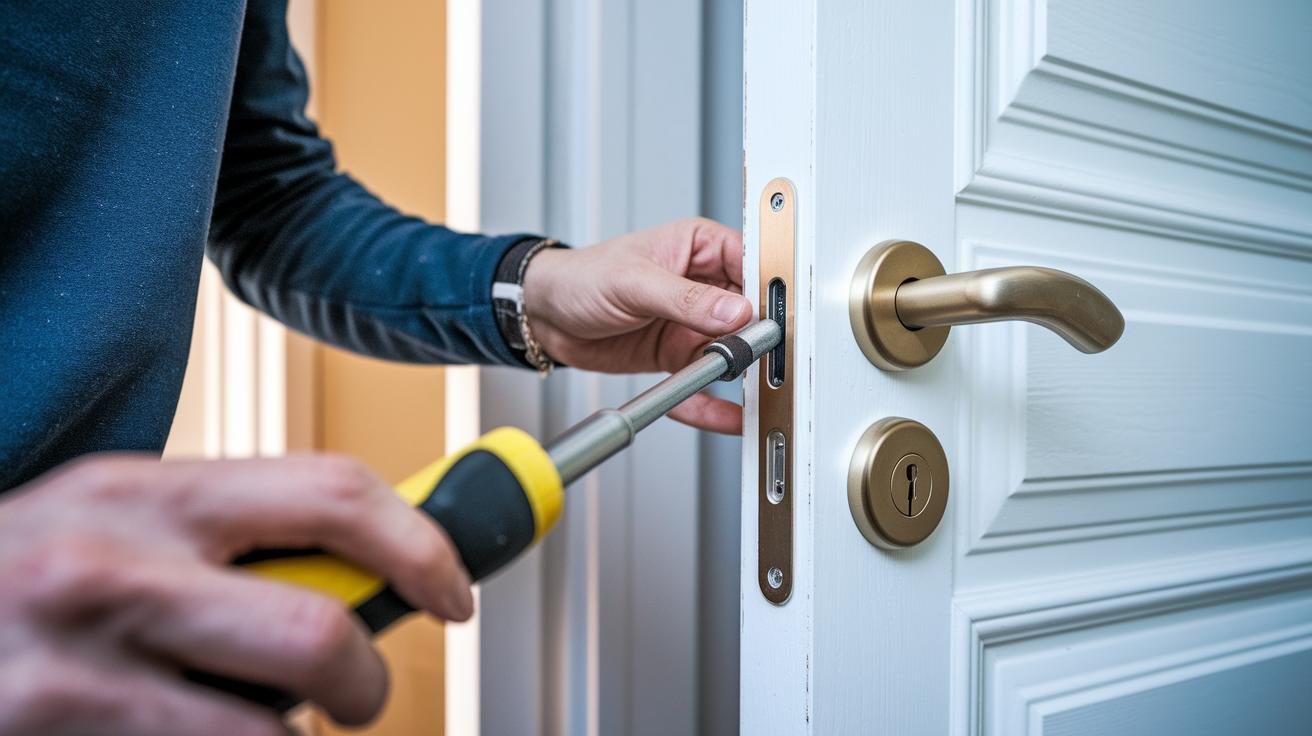
Most smart locks fit right into your old deadbolt hole. You’ll need a screwdriver, maybe a drill or chisel, and about 30 minutes. Ever fumbled installing a latch in the dark? This’ll be way easier.
-
Check door thickness and backset. Measure your door’s thickness and how far the bolt sits from the edge (that’s the backset). If it doesn’t match your lock’s guide, gently drill or chisel until it lines up.
-
Secure the strike plate. Position it so the bolt slides in with a smooth click. Use the screws that came with the lock and keep it flush with the frame. You don’t want a jammed bolt.
-
Align the outside and inside units. Hold the keypad or sensor piece on the outside and the motor housing on the inside. Feed the tailpiece through the lock hole. Got it?
-
Power up with AA batteries. Pop in fresh AA cells until you hear the soft beep. Then tighten the mounting screws evenly – no side should sit at a funny angle.
-
Download the mobile app. Find your lock’s companion app on your phone. Follow the steps to pair via Bluetooth (wireless tech) or hook up to your Wi-Fi network. Think of it like pairing to a speaker.
-
Set your PINs and update the firmware. In the app, create your main PIN and add any guest codes. Then tap Firmware Update so you get all the latest fixes and features.
-
Test the mechanical key backup. Slide in the emergency key and turn it. The cylinder should rotate freely – just in case batteries die or your phone runs out of juice.
Access granted.
Integrating Smart Door Locks with Home Automation
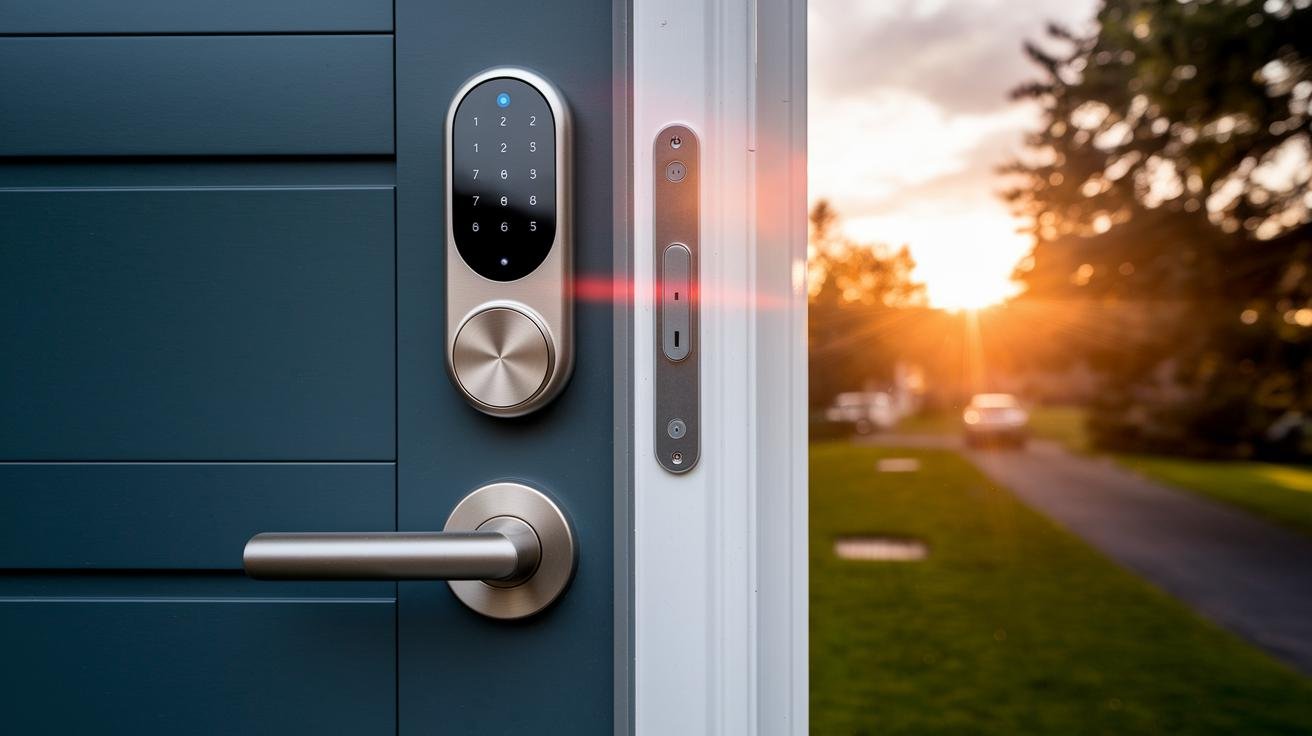
Ever juggled groceries while trying to lock the front door? With a smart lock, you just tell Alexa “Lock up” and you’re golden. Say “Hey Google, is my front door locked?” and Google Assistant will let you know. Or if you’re in the Apple world, a tap in the Home app seals the lock in seconds.
Some locks come with Z-Wave (wireless home network tech) or Zigbee (smart home radio) built in. It’s like pairing your phone to Bluetooth speakers, you know, same idea when your lock links to hubs like SmartThings or Hubitat. You can set a scene that flips on your porch light the moment the bolt clicks or pauses the alarm as soon as you step inside. Nice, right?
Um, and if your internet goes down, local-only locks still turn the bolt and flash status lights right on the door. You just can’t check in remotely until your Wi-Fi is back. No big deal for most of us.
Cloud-based management takes it further. You can set guest codes that only work on certain days, get instant alerts if someone unlocks your door after hours, or use geofencing auto-lock so the door snaps shut when you pull away in your car. It’s the best balance of on-site peace of mind and off-site convenience.
Troubleshooting and Maintenance of Smart Door Locks
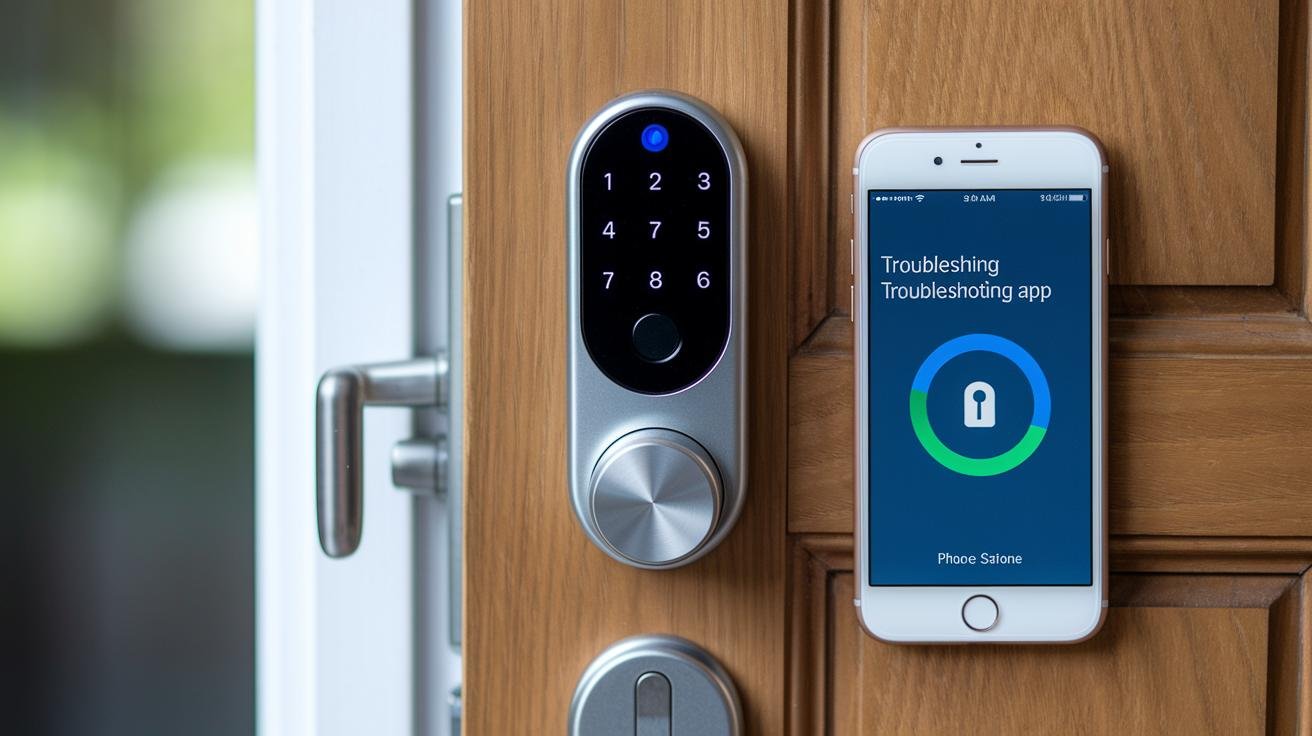
Bluetooth (short-range wireless) or Wi-Fi dropouts can leave you on the wrong side of the door. Ever been locked out because your lock lost its signal? Move a few steps closer to your router or hub. If that doesn’t help, reboot your home network.
A quick power cycle of your lock’s hub or router often clears those little glitches, letting your lock click back to life.
Sometimes your lock just won’t pair after a phone update. Oops, let me clarify… open the companion app, delete the old device entry, and scan for your lock again.
It’s just like re-pairing a Bluetooth speaker, a fresh start for a fresh connection. Swapped phones? Pair the new one right away.
If your lock can’t talk to its hub, you might see a sync error. Head into your hub’s settings and hit re-sync. You’ll know it worked when the lock’s status light blinks green, just a little flash saying, “We’re back in touch.”
A jammed motor is easier to fix than you’d think. Gently turn the knob back and forth by hand until the gears feel free.
Then run the lock calibration in the app (it teaches the motor its end points). You’ll hear a soft click when it’s done.
Low battery alerts are your best friend. Don’t wait for a dead lock. Been there, I once woke up to a dead lock at 6 am. Not fun.
As soon as you see a warning light or hear that beep, slip in fresh AA batteries. It keeps your lock’s power management circuits happy – and your home secure.
When all else fails, a device reset can clear hidden software errors. Press and hold the reset button (check your manual), restore factory settings, and set up your codes again.
And hey, if the tech still acts up, remember you’ve got the mechanical key override. It’s the old-school backup for a new-school lock.
Benefits and Limitations of Smart Door Locks
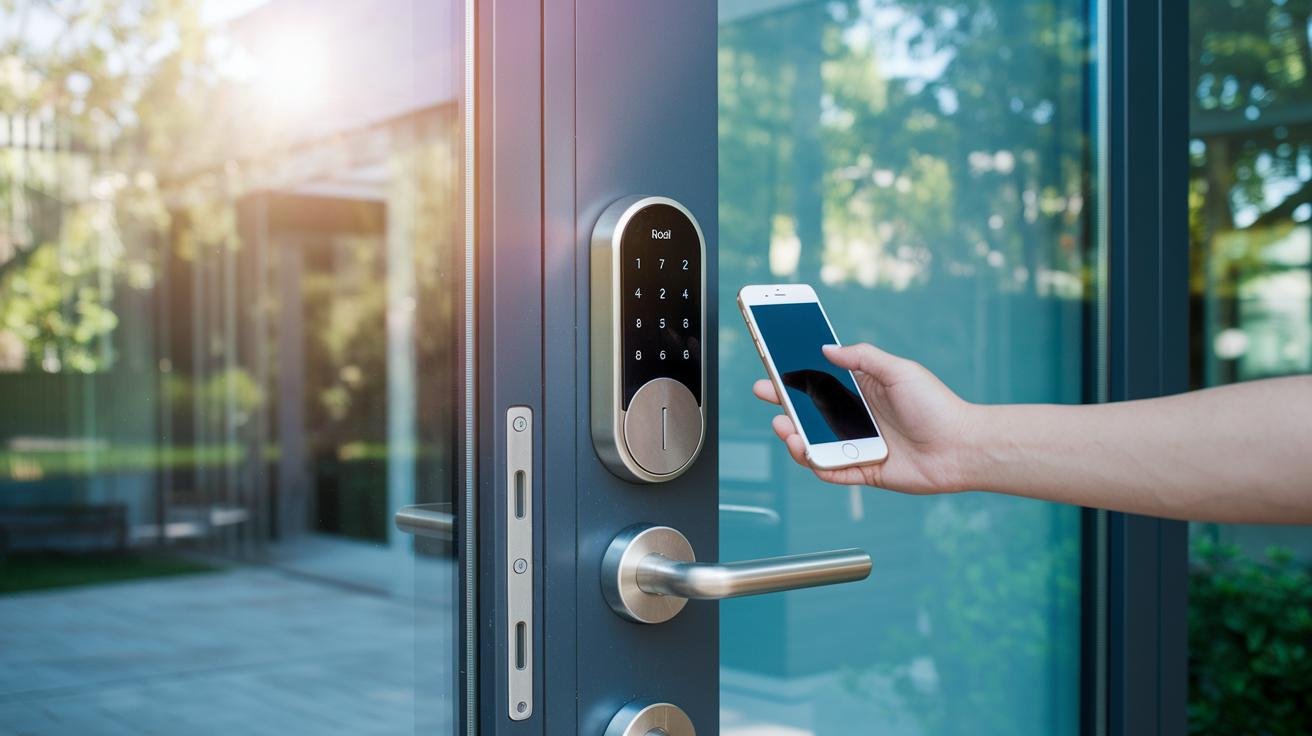
Ever fumbled with your keys and wished for a simpler way in? Smart locks let you tap a code or use your phone instead of digging for metal. No more checking the door twice, lock or unlock from anywhere. Secure, simple, smart.
Audit trail logging keeps a date-and-time list of who came and went. Vacation hosts love this. You send a code that stops working at checkout. Offices like it, too: each person gets a PIN or virtual key you can revoke in seconds. Commercial-grade models handle hundreds of users and plug into building software for easy team management.
Um, here’s a catch: they run on batteries. You’ll get low-battery alerts, but if you ignore them, you’ll need your old mechanical key. A weak Wi-Fi signal or a dead router can block remote commands until you’re back in range. Outdated firmware (the lock’s software) can open security gaps if you skip updates.
There’s a small learning curve for guests or older family members who aren’t gadget fans. But once you show them the ropes, most find it’s a tiny ask for big convenience. Access granted.
Real-World Smart Door Lock Models and Use Cases
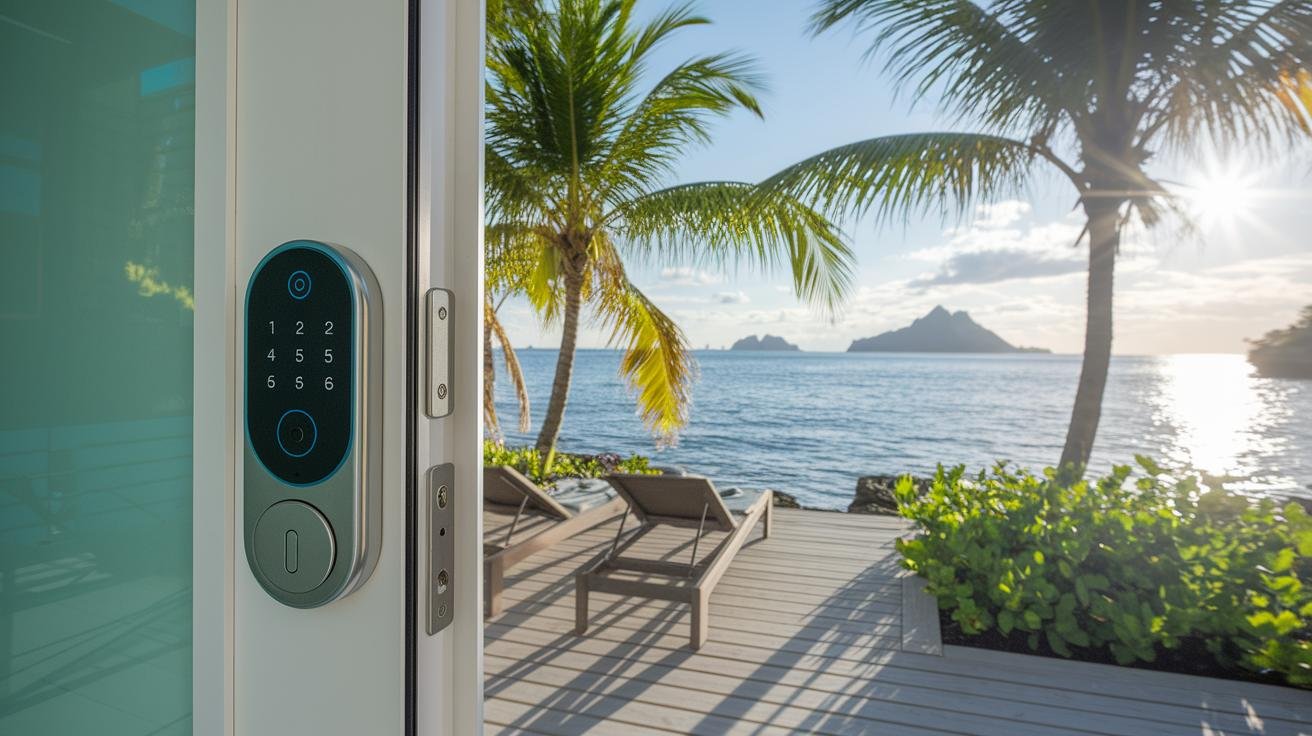
Yale Linus Smart Lock offers AES-128 encryption (bank vault-level security). It works with Apple HomeKit, Amazon Alexa, and Google Assistant.
You punch in an eight-digit code and can set geofencing auto-lock (it clicks shut when you drive away). Perfect for homeowners who share guest passcodes and love simple voice commands. Ever fumbled for keys in the dark?
Lockly Vision™ packs a fingerprint sensor, a keypad, and a built-in video doorbell. You see who’s at the door, chat with visitors, and send a one-time code right from your phone. Hmm, if you run a vacation rental you’ll love setting codes that stop at checkout. With Airbnb lock compatibility, guests just tap in. No key needed.
Yale Conexis L1 pairs a budget-friendly design with app-based control. You schedule codes so renters only enter at the right times. And it fits any door. No extra drilling needed. Landlords, this one’s for you.
ADT Smart Lock runs on four AA batteries and beeps a low-battery alert before it dies. Offices can use its audit trail (entry log) to track staff in and out. You can revoke codes on the fly if someone loses access. For more on commercial-grade picks, check best smart door lock for commercial use.
Homeowners can also link their lock to scenes that turn on lights or mute alarms when the bolt slides home. It feels like a welcome hug after a long day. Got it?
Access granted.
Final Words
Right when you tap your code, scan a finger or use your phone, the lock’s chip checks it, drives the motor, and clicks the deadbolt into place. Really tidy action.
We explored the guts – microcontrollers, sensors, battery power – along with Bluetooth, Wi-Fi and Z-Wave links, all wrapped in AES encryption. Then we covered PIN pads, biometrics, certifications, installation steps, hub pairing, and firmware tips.
You’ve seen keyless ease, remote control perks and the limits of batteries or networks. Now you know how do smart door locks work, and you’re set for a smarter, safer home.
FAQ
How does a smart door lock work?
A smart door lock uses a keypad, fingerprint reader or phone app to check your credentials. Its processor triggers a motor that moves the deadbolt and encrypted signals confirm lock position.
How do smart door locks work without a key?
Smart locks without keys let you open your door by entering a PIN on a keypad or tapping a phone app via Bluetooth (wireless tech). The lock’s processor grants access and drives the deadbolt automatically.
How do smart door locks work with a key?
Smart locks with a key offer a mechanical cylinder as a backup. If batteries die or electronics fail, you insert and turn your key to retract the deadbolt manually.
How do smart door locks get power?
Smart door locks run on replaceable AA batteries housed inside. A power-management circuit monitors battery levels and warns you to swap them before they run out.
What are the disadvantages of a smart door lock?
Smart door locks can lose power if you ignore low-battery alerts and rely on a network connection that might drop. They also need regular firmware updates and can feel tricky for non-tech users.
What is Smart Lock in Android?
Smart Lock in Android keeps your device accessible in trusted places or devices. You can set it to stay open at home, near a connected Bluetooth device, or when it recognizes your face or voice.
What is Smart Lock in Samsung?
Smart Lock on Samsung phones secures your screen and adds a trusted biometric or device. Use face recognition, fingerprint, a trusted Bluetooth device or location to keep your phone accessible automatically.
How does Smart Lock work on Chromebook?
Smart Lock on Chromebook lets you open your laptop using a paired Android phone. When your phone is nearby and ready, the Chromebook detects it via Bluetooth (wireless tech) and signs you in.
How does Smart Lock work on Airbnb?
Smart Lock on Airbnb lets hosts create time-limited codes for guests. Your lock integrates with Airbnb’s platform, automatically generating and disabling PINs based on booking dates.
What is the ADT smart door lock and how do I install it?
The ADT smart door lock is a battery-powered deadbolt linked to ADT systems. To install, swap your old lock, secure the new assembly, insert AA batteries, then configure it through the ADT mobile app.

